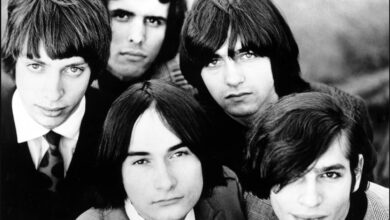Be My Baby: The Ronettes’ Timeless Anthem That Shaped the Sound of the 60s
In the early 1960s, the music scene was bursting with innovation, and The Ronettes, a trio consisting of sisters Ronnie and Estelle Bennett and their cousin Nedra Talley, were ready to leave their mark. Formed in 1959, the group initially performed under different names before settling on The Ronettes. Their big break came when they caught the attention of producer Phil Spector, a collaboration that would change their lives and reshape the direction of pop music.
Phil Spector, known for his groundbreaking “Wall of Sound” production technique, immediately recognized The Ronettes’ potential. In 1963, he signed them to his Philles Records label. Their earlier recordings showed promise but didn’t achieve major success. Spector, however, believed they were destined for greatness with the right song and production.
Their breakthrough came with “Be My Baby,” a song co-written by Spector, Jeff Barry, and Ellie Greenwich. Released in August 1963, the track was an instant hit. Its lush orchestration and Ronnie Spector’s emotive vocals captured the hearts of listeners. The song’s layered production and echo effects, hallmarks of the Wall of Sound, set a new standard in music production.
“Be My Baby” quickly climbed the charts, reaching number two on the Billboard Hot 100 and becoming a top-five hit in the UK. Its iconic opening drumbeat, performed by Hal Blaine, became one of the most recognizable introductions in music history, influencing countless songs and artists for decades to come.
The song transcended its commercial success to become a cultural phenomenon. It inspired artists across genres and generations. Brian Wilson of The Beach Boys called it a major influence on his work, and its structure and production were studied and emulated widely, solidifying its place as a foundational work in pop music.
Although The Ronettes faced challenges in the competitive music industry, “Be My Baby” ensured their legacy. Its enduring appeal led to its inclusion in numerous films, advertisements, and cover versions by other artists, keeping it alive in the public consciousness for decades.
The song has received many accolades over the years. It was inducted into the Grammy Hall of Fame and frequently ranks on lists of the greatest songs of all time. These honors highlight its profound influence on the music industry and popular culture.
“Be My Baby” also played a key role in influencing future musical movements. Its direct yet powerful delivery has been cited as a precursor to punk rock, and its innovative production inspired artists far beyond its original era. Even Joey Ramone of The Ramones expressed admiration for the track.
Over the years, the song has remained a staple in various media. Its inclusion in iconic films like “Dirty Dancing” introduced it to new generations, ensuring its timeless relevance. The universal themes of love and longing, coupled with its masterful production, have allowed it to resonate across decades.
The Ronettes’ live performances of “Be My Baby” added to their iconic status. Appearances on popular shows like “American Bandstand” brought the song into millions of homes, amplifying its reach and showcasing the group’s charisma and energy.
The song’s adaptability is evident in the numerous covers by artists from different genres. Each rendition honors the original while offering a fresh take, demonstrating its enduring strength and universal appeal.
Beyond the music itself, the personal dynamics between Ronnie Spector and Phil Spector added an emotional layer to the song. Many interpret it as a reflection of Phil’s feelings for Ronnie, which adds depth to its narrative and performance.
The production technique used in “Be My Baby,” particularly the Wall of Sound, was groundbreaking. Its dense, layered arrangements created a rich, immersive experience that revolutionized how music was made and appreciated. It remains a case study for producers and musicians.
“Be My Baby” was pivotal in shaping the girl group era of the 1960s. Its success paved the way for other female groups, demonstrating the commercial and artistic potential of women in pop music. The song’s mix of vulnerability and strength made it relatable and empowering.
Even today, “Be My Baby” is celebrated as one of the most influential songs in music history. Its timeless melody, emotional depth, and innovative production ensure that it continues to captivate audiences and inspire artists around the world.



